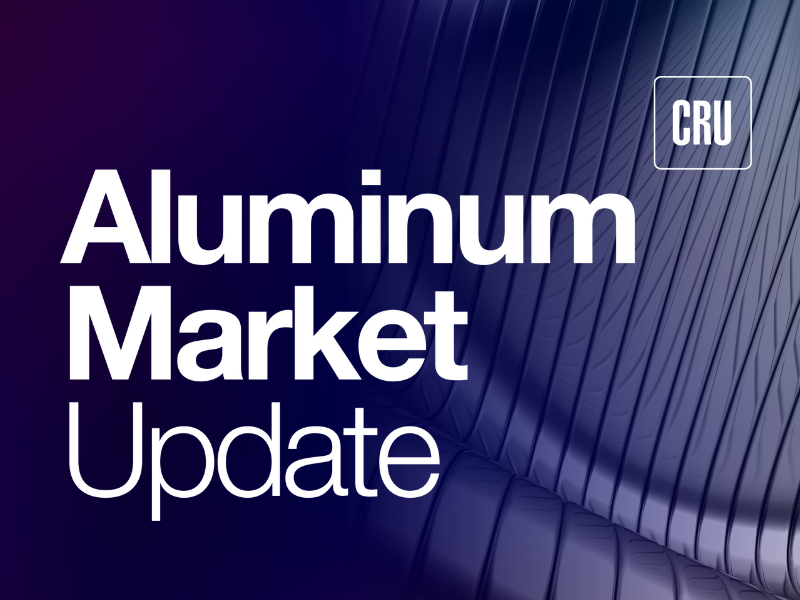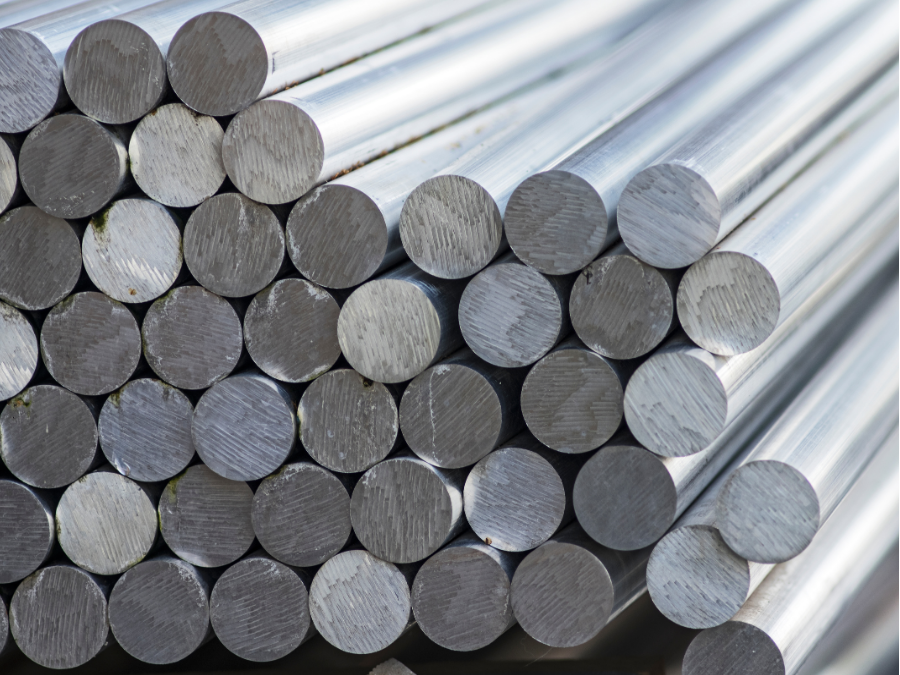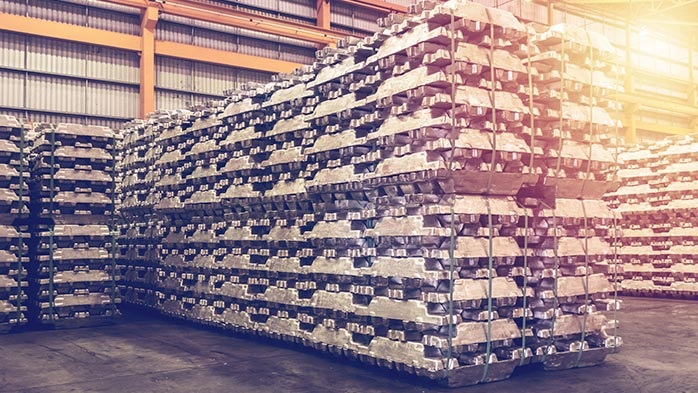Aluminum

CRU: Aluminum greenhouse-gas emissions drop despite rise in metal output
Written by Marziyeh Horeh
March 1, 2024
IAI reports aluminum industry greenhouse gas emissions declined in 2022
According to data released yesterday by the International Aluminium Institute (IAI), in 2022 CO2 equivalent emissions released by the aluminum industry declined from 1.13 giga-metric tons (mt) CO2e to 1.11. This came despite aluminum production growing by 3.9% that year from 104.1 million mt to 108.2 million mt. The emissions intensity of primary aluminum production has been declining since 2019, falling by 4.4% in 2022 alone from 15.8 million mt CO2e/t to 15.1.
IAI Secretary General Miles Prosser said: “Our challenge is to reduce emissions while growing production. Aluminum demand is expected to grow significantly over the decades ahead, because of its role in decarbonization economy wide. This will tend to drive increased emissions. But at the same time, the industry is reducing the average emissions intensity of each tonne of production.”
Constellium to head recycling project
French aluminum product manufacturer Constellium will take the lead in the new “Close the Loop” initiative – an industry partnership aiming to develop technologies to dismantle, sort, and remelt wrought aluminum from end-of-life vehicles to be used in future vehicles.
As an increasing amount of aluminum is used in vehicles, it is essential the metal is efficiently recycled and repurposed into new vehicles, preserving its value, and contributing to a circular economy, the company argues. Recycling aluminum requires only 5% of the energy used to produce primary metal and emits 95% fewer greenhouse-gas (GHG) emissions, said Constellium, which produces rolled and extruded aluminum parts for vehicles.
Through the Close the Loop project, several options including full vehicle shredding and dismantling of aluminum-rich components will be assessed technically and economically. Specific work includes new aluminum auto body sheet alloys with increased tolerance to impurities being tried out at Constellium’s C-TEC research and development center, which is also investigating new technologies to decarbonize melting operations.
The company’s partners in Close the Loop are automotive recycler Indra, metal recycler Galloo and MTB Recycling, which carries out metal shredding and sorting. The project is part-funded by the French government.
US AA association indicates an improvement in rolled product shipments in January
The US Aluminum Association (AA) also released its latest shipment report for sheet and plate for January. This is the first shipment data we’ve gotten for 2024. According to the report, sheet and plate shipments totaled 811.5 million pounds – an increase of 3.6% year on year (y/y) and up 16.1% month on month (m/m).
Overall, this last report is in line with the most recent months. The sector has been back to growth since November, although the rate has been modest so far. Indeed, the December report only showed a growth of 1.1% y/y. Meanwhile, we are still yet to receive the latest extrusions report but shipments for December indicate the sector remains in a difficult position, with shipments then down 5.6% y/y.
Ukraine claims near total ownership of Russian-linked aluminum smelter
The State Property Fund (SPF) of Ukraine says it now owns 97.55% of the Zaporizhia aluminum smelter by taking control of a further 29.54% of the company. Russian oligarch Oleg Deripaska, majority owner of aluminum producer UC Rusal, had the right to dispose of that shareholding, Interfax news agency reported the SPF as saying. Ukraine’s high anti-corruption court has now transferred 29.54% to the fund, which had previously owned around 68.01% of the Zaporizhia plant’s shares.
“This is another step towards ensuring that Russian property in Ukraine works for the Ukrainian economy, and not for the enemy,” fund chairman Vitaliy Koval said, adding the SPF continues to work with sanctioned assets to maximize their use to support Ukraine’s military. Last April, the fund announced it was preparing the financially troubled Zaporizhia plant for privatization.
The Zaporizhia plant used to be Ukraine’s only producer of primary aluminum, with smelting capacity of more than 100,000 mt/year. The enterprise has gradually scaled down operations, shutting its alumina division in March 2009, its primary section in April 2011, and finally its foundry in July 2014.
Alcoa announces agreement to acquire Alumina Limited
Alcoa announced that it has entered into an agreement with Alumina Limited for the acquisition of the company. The two entities have entered into an exclusivity and transaction process deed, which has been confirmed by the Alumina Limited board of directors, which intends to recommend the transaction to Alumina Limited shareholders.
Under the all-scrip, or all-stock, transaction, Alumina Limited shareholders would receive consideration of 0.02854 Alcoa shares for each Alumina Limited share, the online statement says. Based on Alcoa’s closing share price, as of Feb. 23, 2024, the Agreed Ratio implies an equity value of approximately $2.2 billion for Alumina Limited. Alumina Limited shareholders would own 31.25% and Alcoa shareholders would own 68.75% of the combined company.
Alcoa is the sole operator of Alcoa World Alumina and Chemicals (AWAC), a joint venture with Alumina Limited. According to the statement, the agreement will increase Alcoa’s economic interest in its core business and simplify governance by acquiring the minority partner in its AWAC JV, resulting in greater operational flexibility and strategic optionality.
This article was first published by CRU. Learn more about CRU’s services at www.crugroup.com/analysis.

Marziyeh Horeh
Read more from Marziyeh HorehLatest in Aluminum

AMU: Commercial vehicle trends in aluminum
The commercial vehicle sector is showing signs of fatigue, but you wouldn’t know it at first glance of the latest government figures.

AMU: Cascade Die Casting to expand North Carolina site
CDC Atlantic already houses 13 die-casting machines (ranging from 900 to 1,600 tons), three on-site furnaces, and shot blasting capabilities.

AMU: Prysmian’s Encore Wire breaks ground on TX facility expansion
Prysmian’s groundbreaking for a 650,000-square-foot, medium-voltage cable facility on Encore Wire’s Texas campus marks a big development in the aluminum wire and cable sector.

AMU: Canada tightens trade policy on tariff tensions
The moves include reciprocal procurement restrictions, import quotas, and the formation of stakeholder task forces for aluminum industries.

AMU: The art and science of Midwest Duty-Paid Premium discovery
Hashing out duty costs
